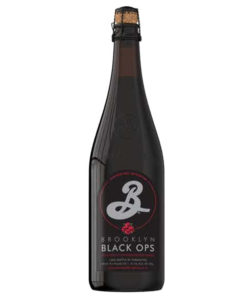Walking down Brooklyn’s North 11th St., one can smell the sweet scent of brewed grain wafting from Brooklyn Brewery’s open doors. A brand that’s reached international shores, Brooklyn Brewery was born in the ‘80s and still reps its old-school cool (we’re talking brewery years, here).
Wondering what the fuss is about? Here are 10 things you should know about Brooklyn Brewery.
Brooklyn Brewery transformed its neighborhood.
Brooklyn Brewery was founded in 1988 by Steve Hindy and Tom Potter. It began operations in its current address in 1990, and opened its doors to the public in 1996.
It’s often credited with the craft-beer-fueled transformation of Williamsburg, the North Brooklyn neighborhood where it’s operated since 1990. When the brewery opened its doors in 1996, “its neighbors were mostly deserted warehouses and factories,” USA Today reported in 2013. Notably home to artists seeking cheap rent, and before that, immigrant families of Latin and Eastern European descent (including this author’s grandparents), Williamsburg’s transformation was shepherded by Brooklyn Brewery.
Like all New Yorkers, Brooklyn Brewery has landlord problems.
In 2016, Brooklyn Brewery announced plans to expand in the Brooklyn Navy Yard to the tune of 75,000 square feet of production facility, a beer garden, and food court set to open in 2018. It called off the expansion in 2017.
The reason? A leasing issue. As Williamsburg real estate became increasingly attractive to hotels and banks (and rents were 10 times as high as when Brooklyn Brewery leased its space at $3 per foot), Brooklyn Brewery founder and chairman Steve Hindy feared the brewery “would not be able to renew leases with our three landlords.” Thanks to an update in zoning laws, the Williamsburg brewery lease was extended to 2025.
Brooklyn Brewery is global.
It has partners around the world, including in California, Colorado, Japan, and Sweden. In 2017, Brooklyn Brewery acquired minority stakes in 21st Amendment of San Leandro, Calif., and Funkwerks of Fort Collins, Colo. In 2016, it sold a minority stake to Kirin Brewery, headquartered in Tokyo.
In fact, it has a sister in Sweden.
In 2014, in partnership with Carlsberg, Brooklyn Brewery launched a sister brewery in Stockholm called Nya CarnegieBryggeriet. (Translation: “New Carnegie Brewery,” a reference to “the oldest living [beer] brand in Sweden, D. Carnegie,” an announcement said.)
According to the announcement, Nya CarnegieBryggeriet was the first European craft brewery to be operated by an American company.
Its brewmaster Garrett Oliver wears a lot of hats.
In addition to being a style icon, Oliver, who joined the brewery in 1994, is also an author (“The Oxford Companion to Beer,” “The Brewmaster’s Table: Discovering the Pleasures of Real Beer with Real Food”), speaker, and all-around craft beer evangelist.
Its lager made it famous, but Brooklyn makes lots of experimental brews.
Brooklyn Brewery has been an innovator since it was founded in 1988. After resurrecting the borough’s pre-Prohibition-era beer with Brooklyn Lager, it continued introducing fans to flavors they’d never tasted. In craft beer’s early days, Brooklyn Brewery’s Black Chocolate Stout, featuring chocolate malt, was groundbreaking. More recently, the Brewmaster’s Reserve series included all manner of ingredients and inspirations, including sumac.
It’s into labels.
Brooklyn Brewery’s label is iconic, and that’s no accident: It was designed by Milton Glaser, creator of the even more iconic “I [Heart] NY” logo. Steve Hindy said he interviewed about 30 different firms before calling up Glaser — whom he continued to dial daily for two weeks. The “B” is intended to evoke Americana baseball nostalgia, while still being “fresh,” Hindy said in an interview.
It supports LGBTQ rights.
Each year, Brooklyn Brewery releases Stonewall Inn IPA in partnership with the legendary Greenwich Village bar known as the seat of the LGBTQ rights movement. Proceeds benefit the Stonewall Inn Gives Back Initiative (SIGBI), a non-profit organization that fights intolerance of LGBTQ citizens through awareness campaigns and educational initiatives.
It resurrected a forgotten hop from Japan.
The Sorachi Ace hop variety was originally developed for Sapporo Breweries in Hokkaido, Japan in the 1970s. It became commercially available there in 1984. In 2006, thanks to American hop grower Darren Gamache of Virgil Gamache Farms, Sorachi Ace became commercially available in the U.S. Brooklyn Brewery was one of the first to experiment with the varietal in a boozy saison. Its eponymous Brooklyn Sorachi Ace is now one of the brewery’s most popular brands.
It’s a tourist destination.
Like its namesake borough, Brooklyn Brewery attracts visitors from around the world. A recent estimate counted 4,000 visitors every weekend — and that was before the 2018 taproom renovations. Learn more about how to get the most out of your visit here.

